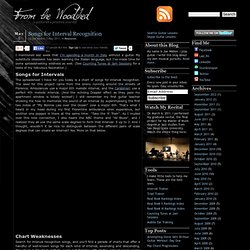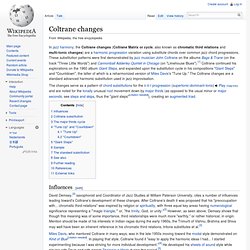

List of musical symbols. Lines[edit] Clefs[edit] Clefs define the pitch range, or tessitura, of the staff on which it is placed. A clef is usually the leftmost symbol on a staff. Additional clefs may appear in the middle of a staff to indicate a change in register for instruments with a wide range. In early music, clefs could be placed on any of several lines on a staff.
Notes and rests[edit] Durations shorter than the 64th are rare but not unknown. 128th notes are used by Mozart and Beethoven; 256th notes occur in works by Vivaldi, Mozart and Beethoven. The name of very short notes can be found with this formula: th note. Breaks[edit] Accidentals and key signatures[edit] Common accidentals[edit] Key signatures[edit] Quarter tones[edit] Quarter-tone notation in Western music is not standardized. Other conventions for microtonal music are used on an ad hoc basis. Time signatures[edit] Time signatures define the meter of the music. Note relationships[edit] Dynamics[edit] Other commonly used dynamics build upon these values. Piano room: chords and scales. Ricci Adams' Musictheory.net. Songs for Interval Recognition. I mentioned last week that I'm spending a month in Italy without a guitar.

My substitute obsession has been learning the Italian language, but I've made time for some spreadsheeting wildness as well. (See Counting Tunes at Jam Sessions for a taste of my ridiculous fascination.) Songs for Intervals The spreadsheet I have for you today is a chart of songs for interval recognition. The seed for this project came from the sirens running around the streets of Florence. Chart Weaknesses Search for interval recognition songs, and you'll find a parade of charts that offer a handful of well-known songs for each kind of interval, ascending and descending. But even when I make my own chart, there's still something missing. The Spreadsheet So I started my own spreadsheet to keep track of only melodies I know and all the scale degrees they use.
View the complete live spreadsheet on Google Docs. My collection of songs will do you no good. Below is a sample of the spreadsheet in its current state. Teoría - Music Theory Web. Musicopedia - The Definitive Musicians Reference Resource. Coltrane changes. Influences[edit] David Demsey,[2] saxophonist and Coordinator of Jazz Studies at William Paterson University, cites a number of influences leading toward's Coltrane's development of these changes.

After Coltrane's death it was proposed that his "preoccupation with... chromatic third-relations" was inspired by religion or spirituality, with three equal key areas having numerological significance representing a "'magic triangle,'" or, "the trinity, God, or unity. "[3] However, as seen above, Demsey shows that though this meaning was of some importance, third relationships were much more "earthly," or rather historical, in origin. Mention should be made of his interests in Indian ragas during the early 1960s, the Trimurti of Vishnu, Brahma and Shiva may well have been an inherent reference in his chromatic third relations, tritone substitutes et al.[3] Coltrane studied harmony at the Granoff School of Music in Philadelphia, exploring contemporary techniques and theory. Play . Play . BMaj7. List of chord progressions.
Online Audio Converter (MP3, WAV, Ogg, WMA, M4A, AAC) – media.io.